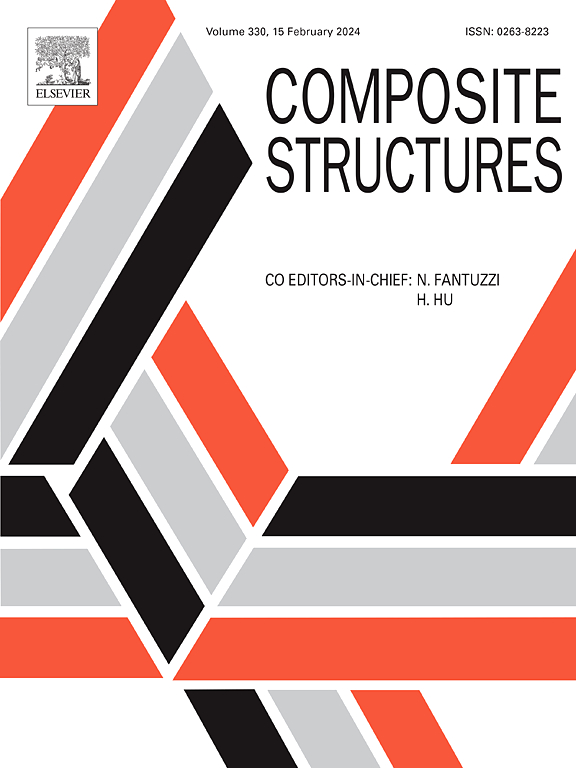A simplified fatigue characterization of defective CFRP laminates with infrared thermography
IF 6.3
2区 材料科学
Q1 MATERIALS SCIENCE, COMPOSITES
引用次数: 0
Abstract
Fiber misalignment and out-of-plane waviness are defects encountered in composite material laminates. These defects are particularly prone to occur when adapting the laminate to angular or complex geometries. Using these defective laminates in aerospace applications can undermine their structural integrity and impact their mechanical properties. This work involves a study of applying infrared thermography techniques to estimate the fatigue limit based on the energy dissipated during tensile testing. Defect-free CFRP laminates and laminates with several out-of-plane waviness distributed along the sample and through the thickness are tested at various stress levels. Estimation of their fatigue limit using thermography is performed, and the results show a significant agreement to those obtained through S-N curves, with less than 2% error for defect-free specimens and 13% for defective ones. A reduction in mechanical properties and service life is observed in the material with defects compared to defect-free material, with a decrease of 16% of the ultimate strength and 40% of the fatigue limit. The study supports the application of thermography as a simple and rapid technique to detect and locate this type of defect and characterize the fatigue limit of the CFRP laminate.
用红外热成像技术简化CFRP缺陷层合板的疲劳表征
纤维错位和面外波纹是复合材料层压板存在的缺陷。当使层压板适应有角或复杂的几何形状时,这些缺陷特别容易发生。在航空航天应用中使用这些有缺陷的层压板会破坏其结构完整性并影响其机械性能。这项工作涉及到应用红外热成像技术来估计疲劳极限的基础上的能量耗散在拉伸试验。在不同的应力水平下,对无缺陷CFRP层压板和沿试样沿厚度分布有几种面外波纹的层压板进行了测试。利用热像仪对其疲劳极限进行了估计,结果与S-N曲线的结果非常吻合,无缺陷试样的误差小于2%,有缺陷试样的误差小于13%。与无缺陷材料相比,有缺陷材料的机械性能和使用寿命下降,极限强度下降16%,疲劳极限下降40%。该研究支持了热成像技术作为一种简单快速的技术来检测和定位这类缺陷,并表征CFRP层合板的疲劳极限。
本文章由计算机程序翻译,如有差异,请以英文原文为准。
求助全文
约1分钟内获得全文
求助全文
来源期刊

Composite Structures
工程技术-材料科学:复合
CiteScore
12.00
自引率
12.70%
发文量
1246
审稿时长
78 days
期刊介绍:
The past few decades have seen outstanding advances in the use of composite materials in structural applications. There can be little doubt that, within engineering circles, composites have revolutionised traditional design concepts and made possible an unparalleled range of new and exciting possibilities as viable materials for construction. Composite Structures, an International Journal, disseminates knowledge between users, manufacturers, designers and researchers involved in structures or structural components manufactured using composite materials.
The journal publishes papers which contribute to knowledge in the use of composite materials in engineering structures. Papers deal with design, research and development studies, experimental investigations, theoretical analysis and fabrication techniques relevant to the application of composites in load-bearing components for assemblies, ranging from individual components such as plates and shells to complete composite structures.
 求助内容:
求助内容: 应助结果提醒方式:
应助结果提醒方式:


